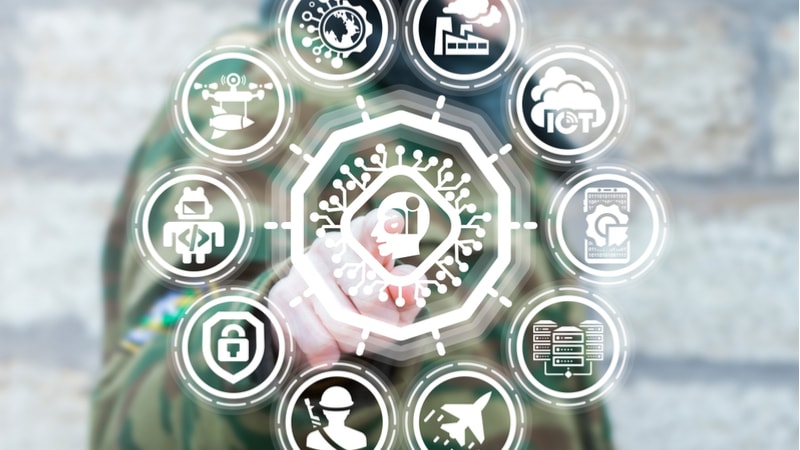
The U.S. Army, which has been putting a lot of work into its electronic warfare systems, is now turning to artificial intelligence to make those systems work.
The service’s Cyber Electromagnetic Activities (CEMA) teams and other soldiers conducting electronic warfare (EW) have a lot of information to sift through as data comes in from an array of sensors and other sources, ranging from satellite to cellphone communications. All that data is intended to go to one computer screen, which can become cluttered, to say the least.
“With the current sensor technology, you end up with a lot of noises on your display,” Sgt. 1st Class Steven Schoyen, an electronic warfare NCO for the 1st Stryker Brigade Combat Team, said in an Army report. “As the operator is attempting to discern what one correlation is, three or four more may begin to evolve. At the same time, noise and erroneous data is populating too.”
And that picture is only going to get more noisy as the Army continues to add sensor and other communication feeds.
The Army’s Rapid Capabilities and Critical Technologies Office (RCCTO) is looking to bring the cognitive burden down to a manageable state with the use of an AI system that quickly ranks incoming data in order of priority, giving soldiers the option of filtering out less important signals, the Army said.
The AI tool, a prototype being tested at Aberdeen Proving Ground in Maryland, and planned for an operational pilot later this year with a forward deployed unit, is designed to simplify the user interface while using algorithms trained to separate the wheat from the chaff, taking everyday, low-level tasks that EW soldiers perform out of the picture. It also lets users know if a signal is coming from an enemy source (indicated on the screen by red), a friendly source (blue), or is just noise (gray).
“We know that many of the signals emanating from their display are less important signals, or signals that are known to be friendly or neutral sources,” said Rob Monto, the director of the RCCTO Emerging Technologies Office. “Using AI, we can tell with extreme accuracy which signals are not important based on their pattern of life, their mobility profiles, and characteristics. By eliminating these signals, soldiers can concentrate on those most significant.”
The Pentagon has put a lot of emphasis on EW in recent years, after admitting that it left EW on the backburner during a decade and a half of concentrating on the wars in Iraq and Afghanistan, where use of the electromagnetic spectrum was fairly uncluttered. Russia’s effective use of EW in Ukraine and Syria, along with China’s emerging hegemony in the Pacific, have brought a new urgency to seeing the spectrum as a warfare domain.
The Army, and the Department of Defense overall, is coupling EW with cyber operations. The Army’s Electronic Warfare Strategy calls for adding an EW platoon to every brigade combat team’s military intelligence company, and integrating EW with cyber and information systems across all of its echelons. The service also has delivered prototype EW systems to U.S. Army Europe over the past year. Those are temporary systems, while the Army deploys and fields a program of record, which would include an EW Planning Management Tool (EWPMT).
The AI tool being tested at Aberdeen has been developed quickly. The Army said it came across the technology at an industry event, assessed its scalability, and began working on the prototype in October 2018. By November, it had started a cognitive mapping process that included feedback from EW soldiers on design, performance, functionality, and training.
The Army said the tool will enable EW systems to work better now and in the future. “Operating on the complex battlefields of the future or in megacities with dense radio frequency environments, as our EW Soldiers get more sensors, they’ll also receive much more data,” said Chief Warrant Officer 3 William Insch, an EW Technician with the Army’s Project Manager Electronic Warfare & Cyber (PM EW&C). “AI will help translate all this data into information, and ultimately distill it into understanding, so EW soldiers can better support the commander.”
